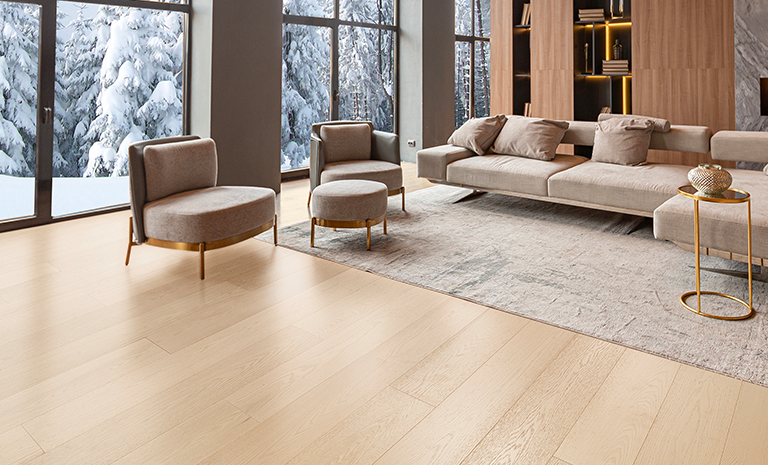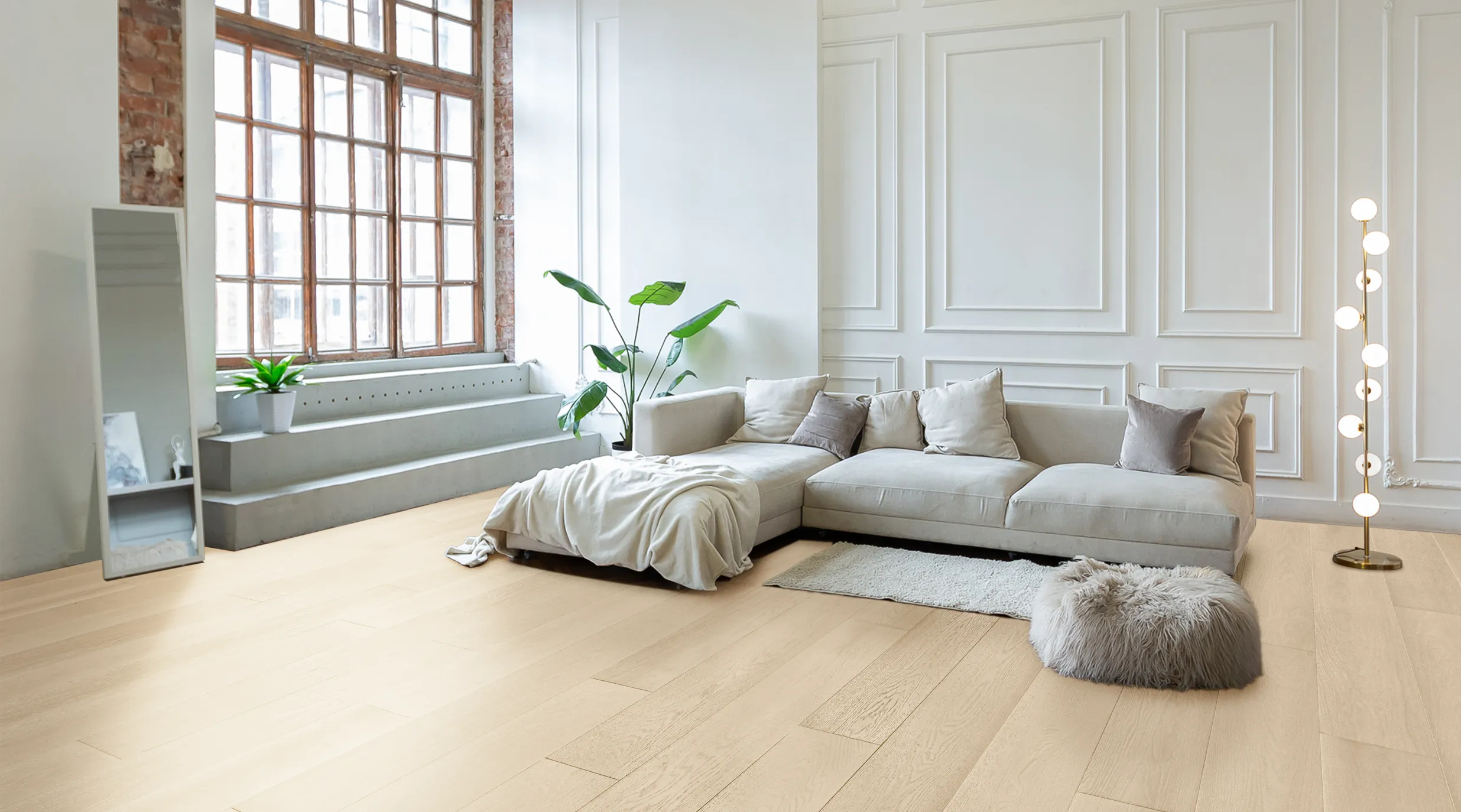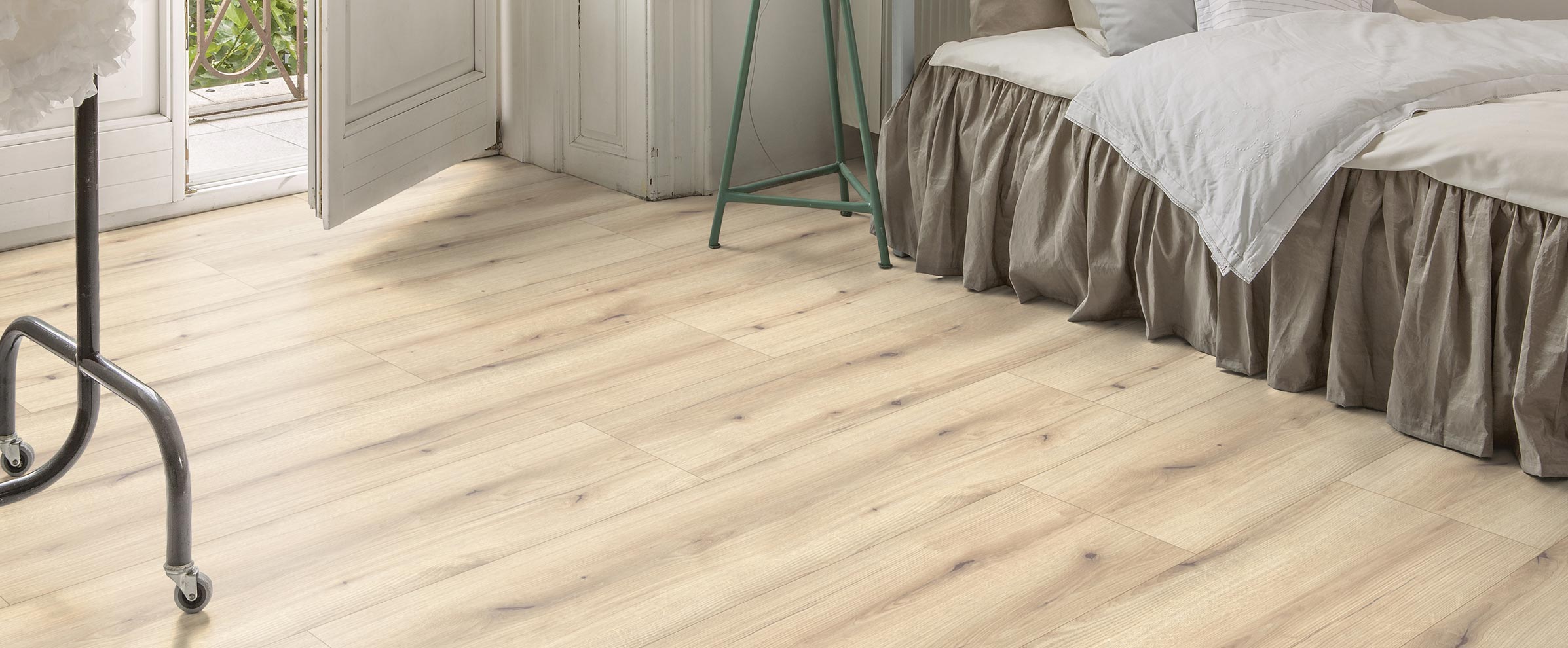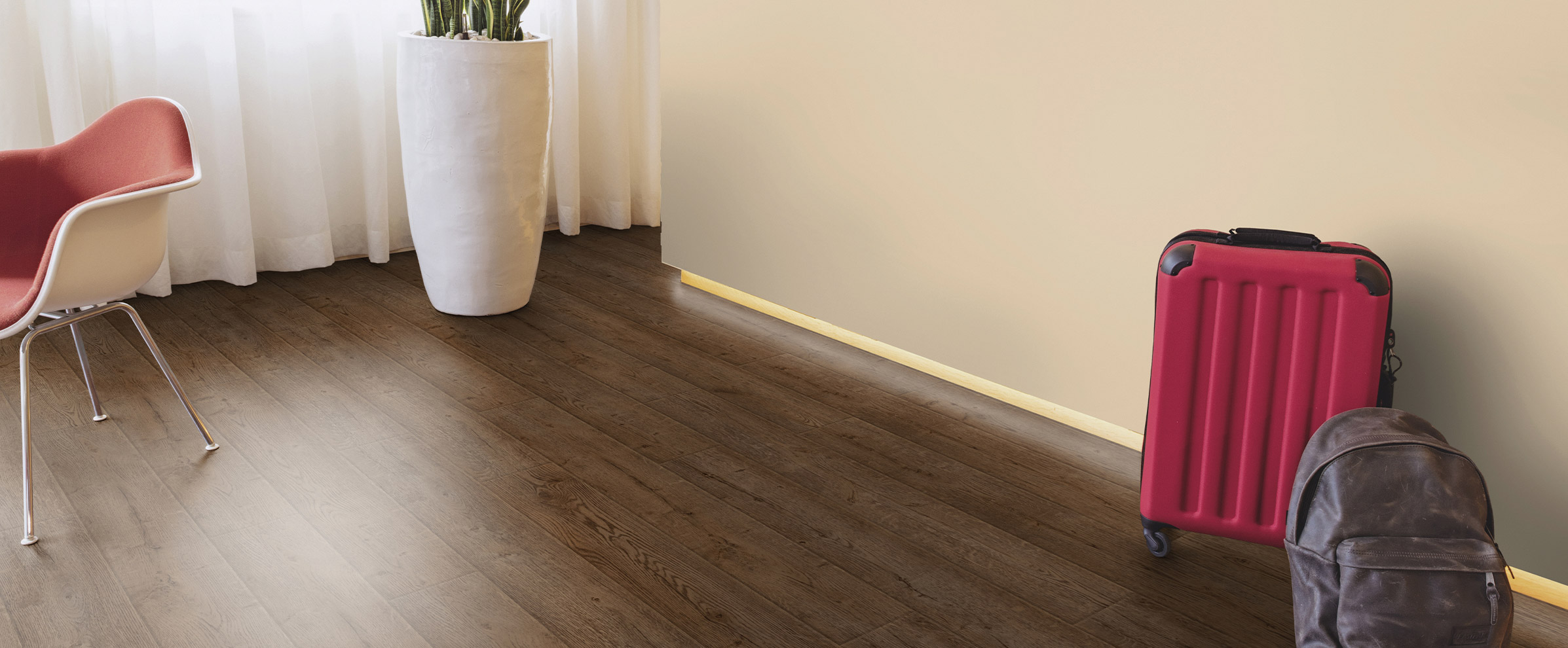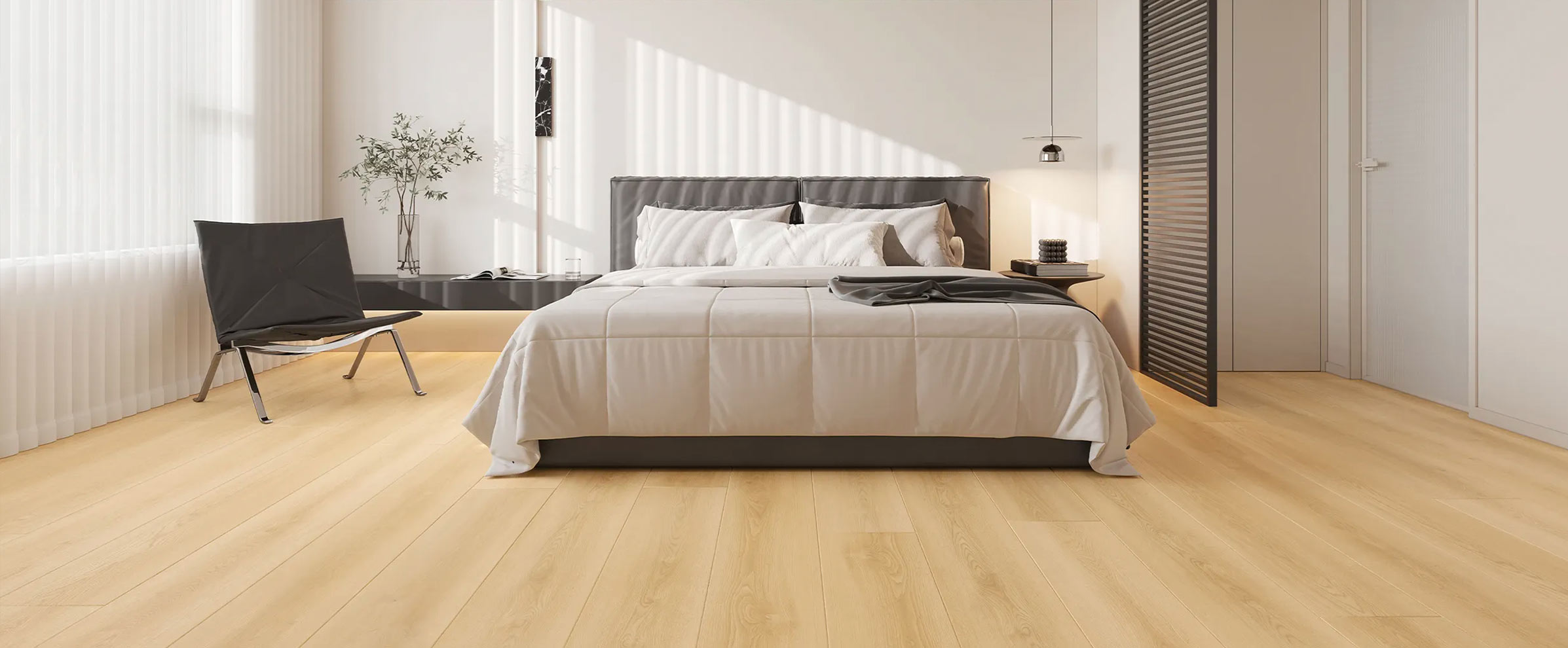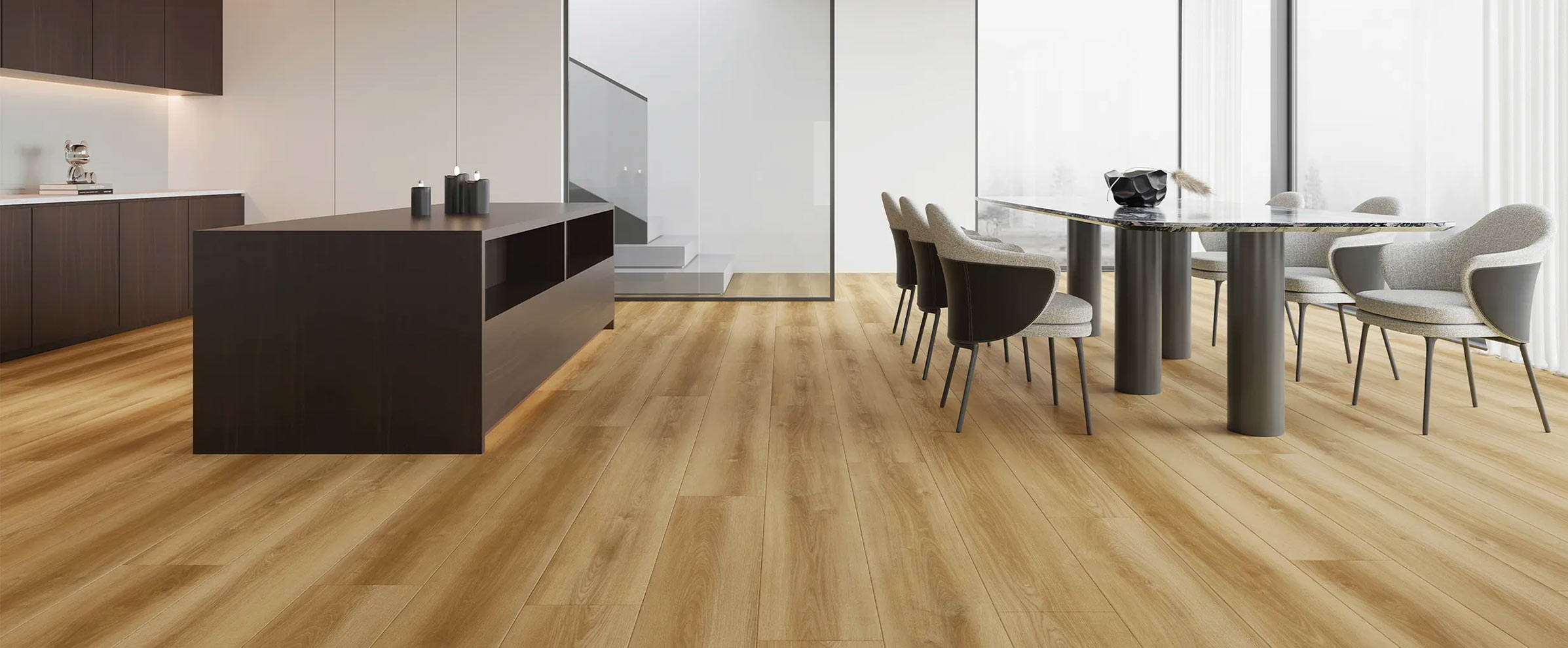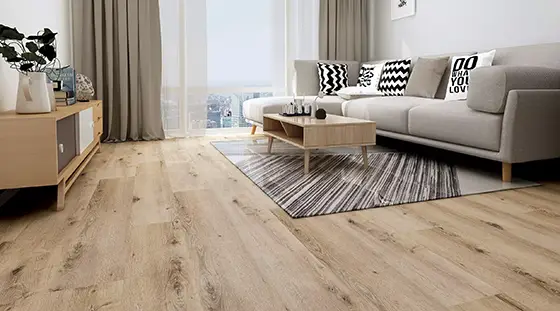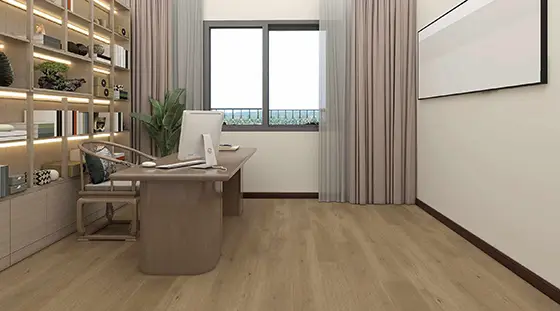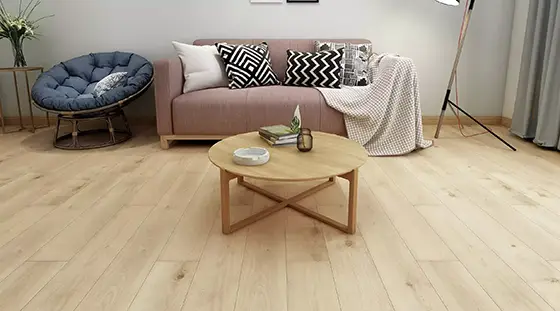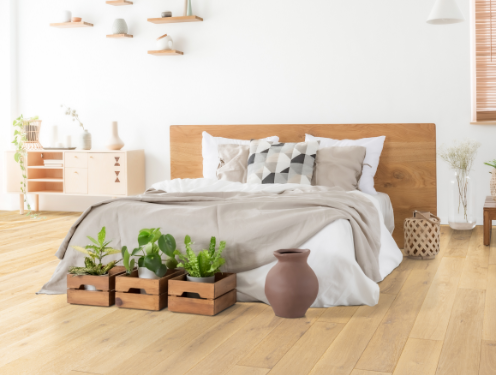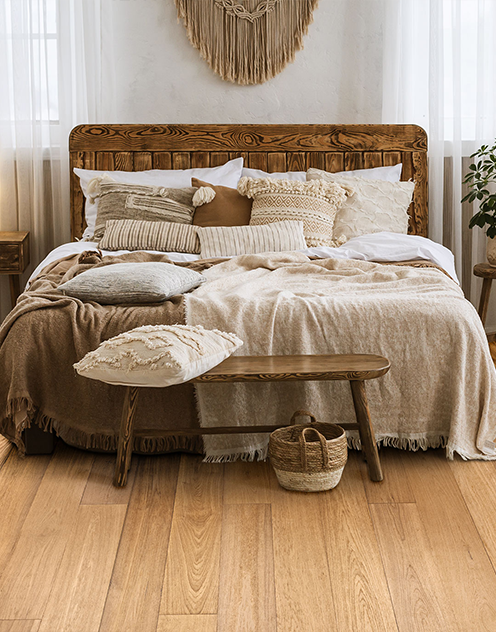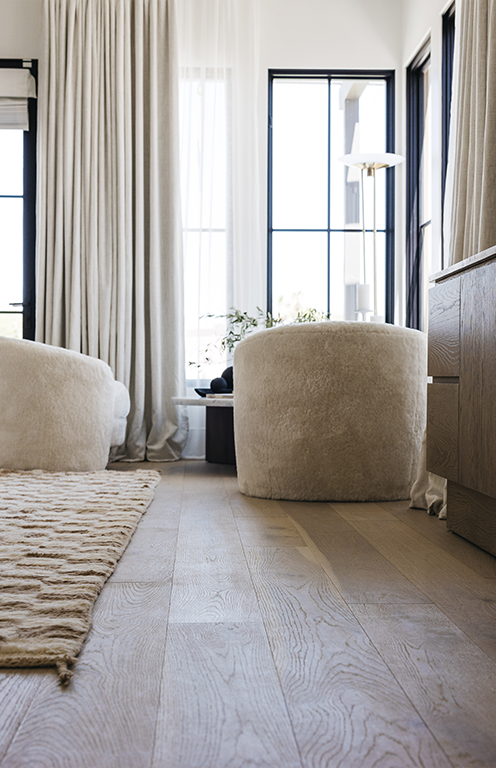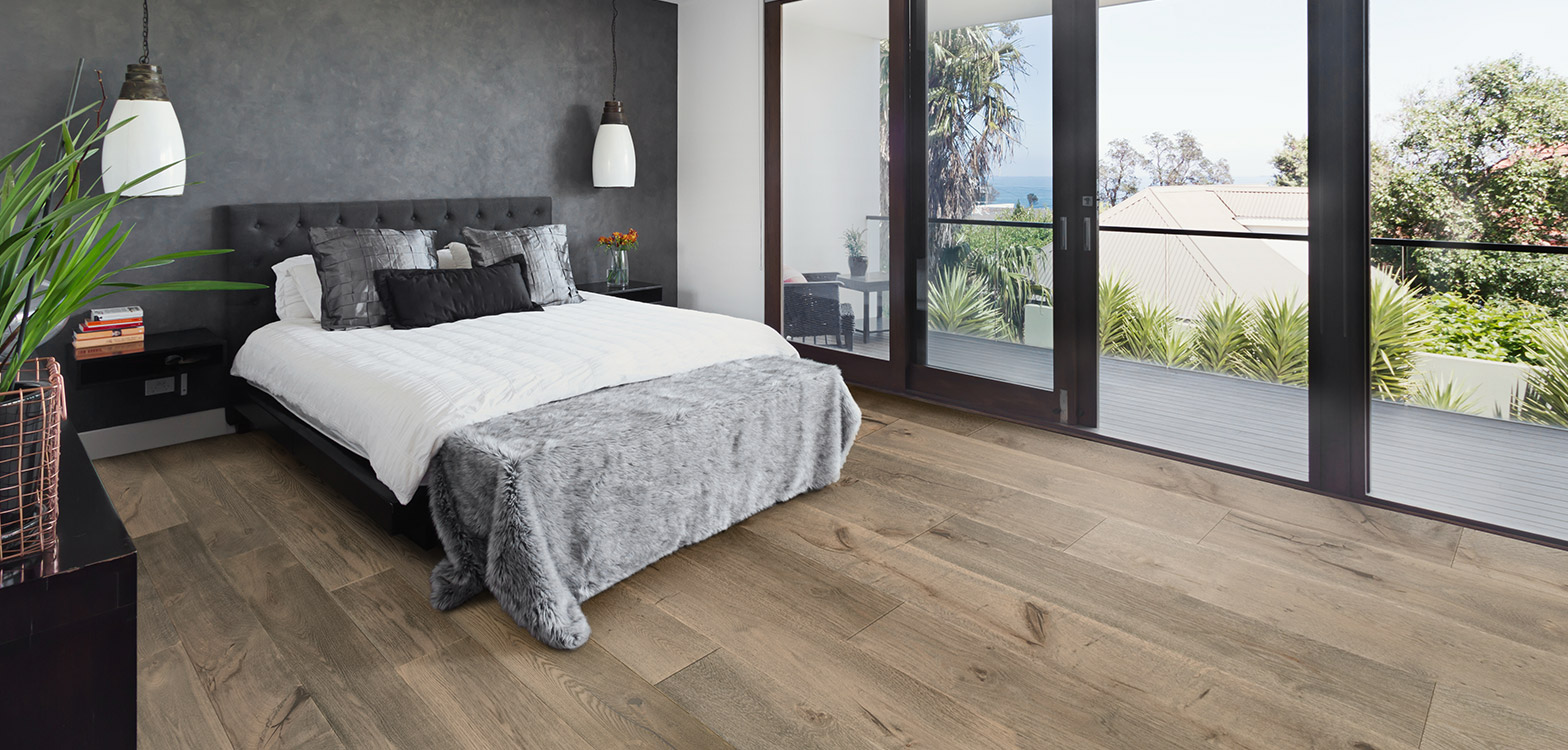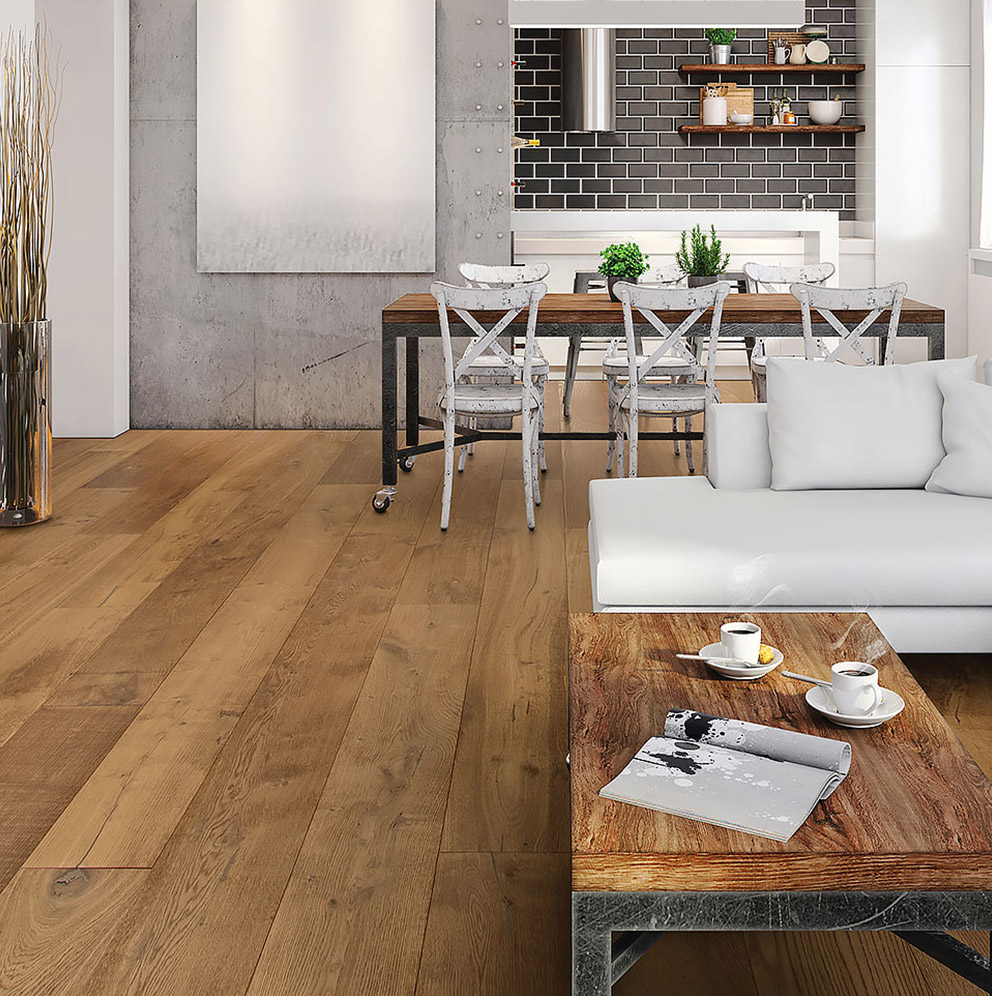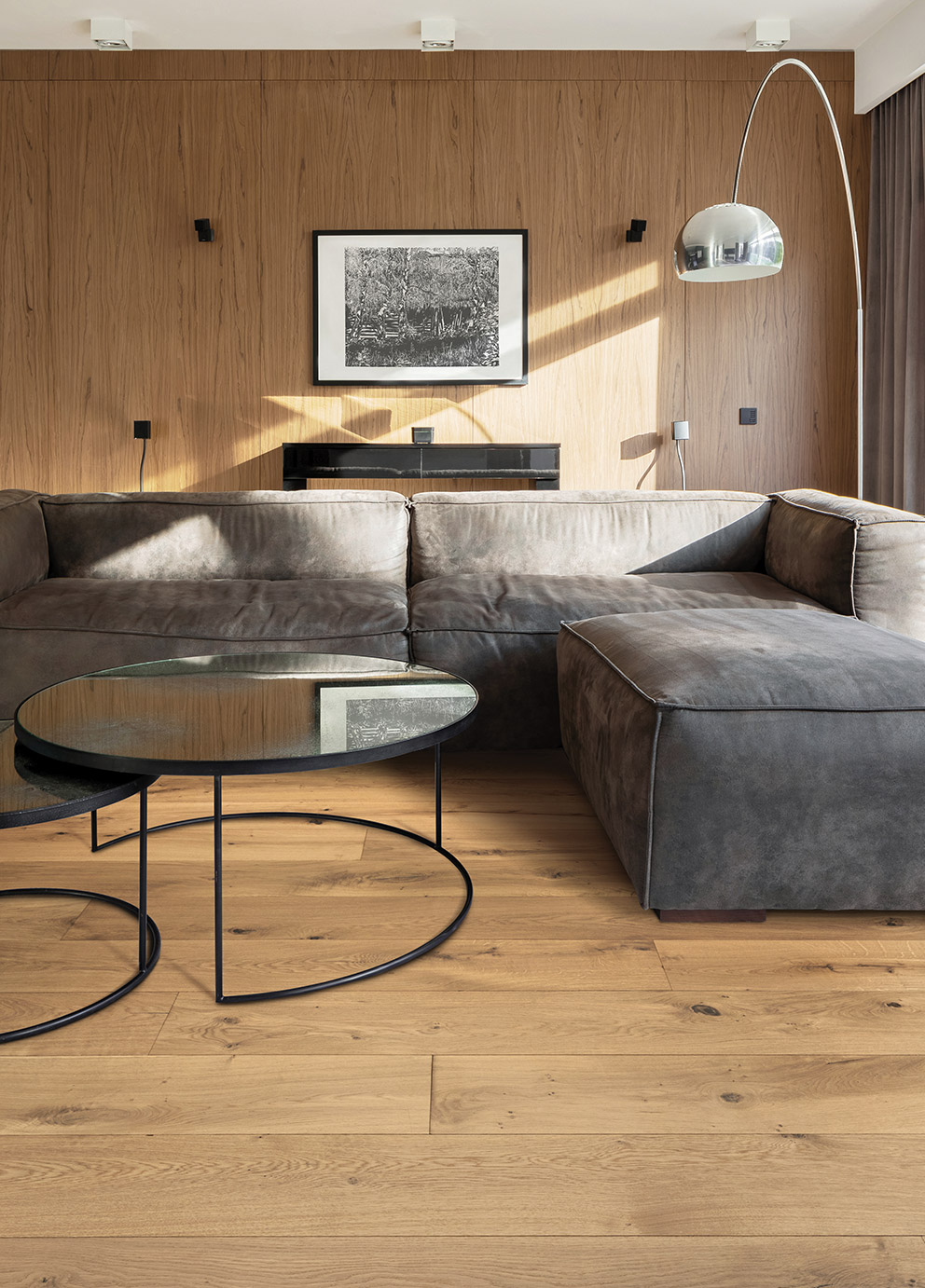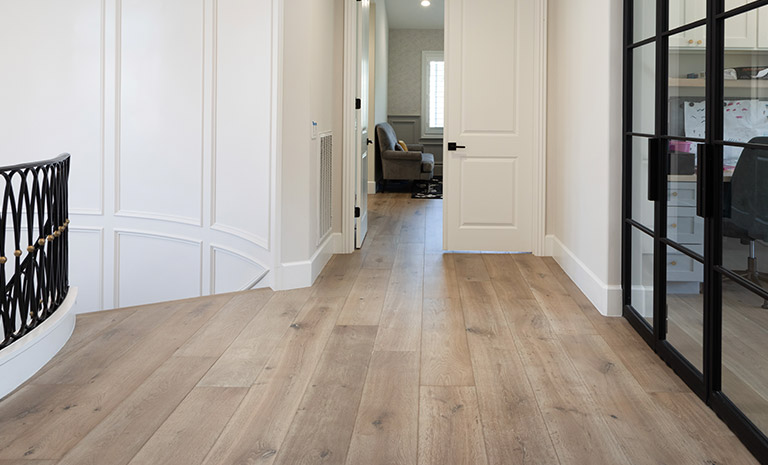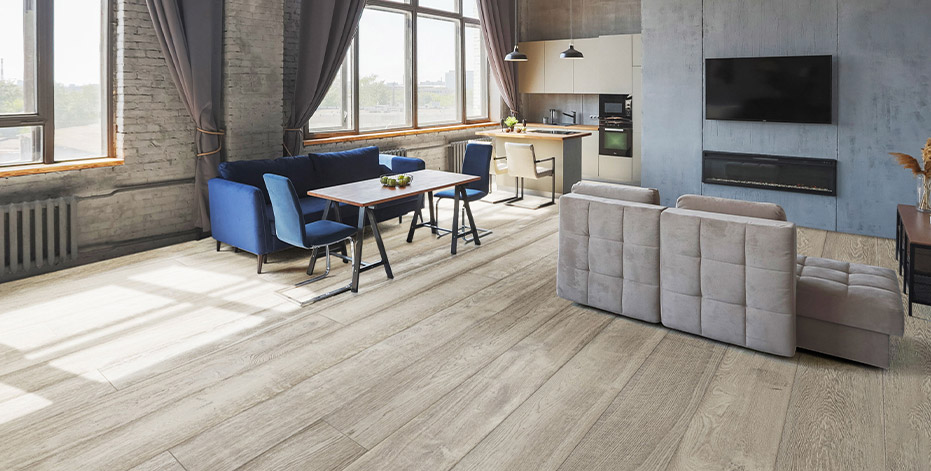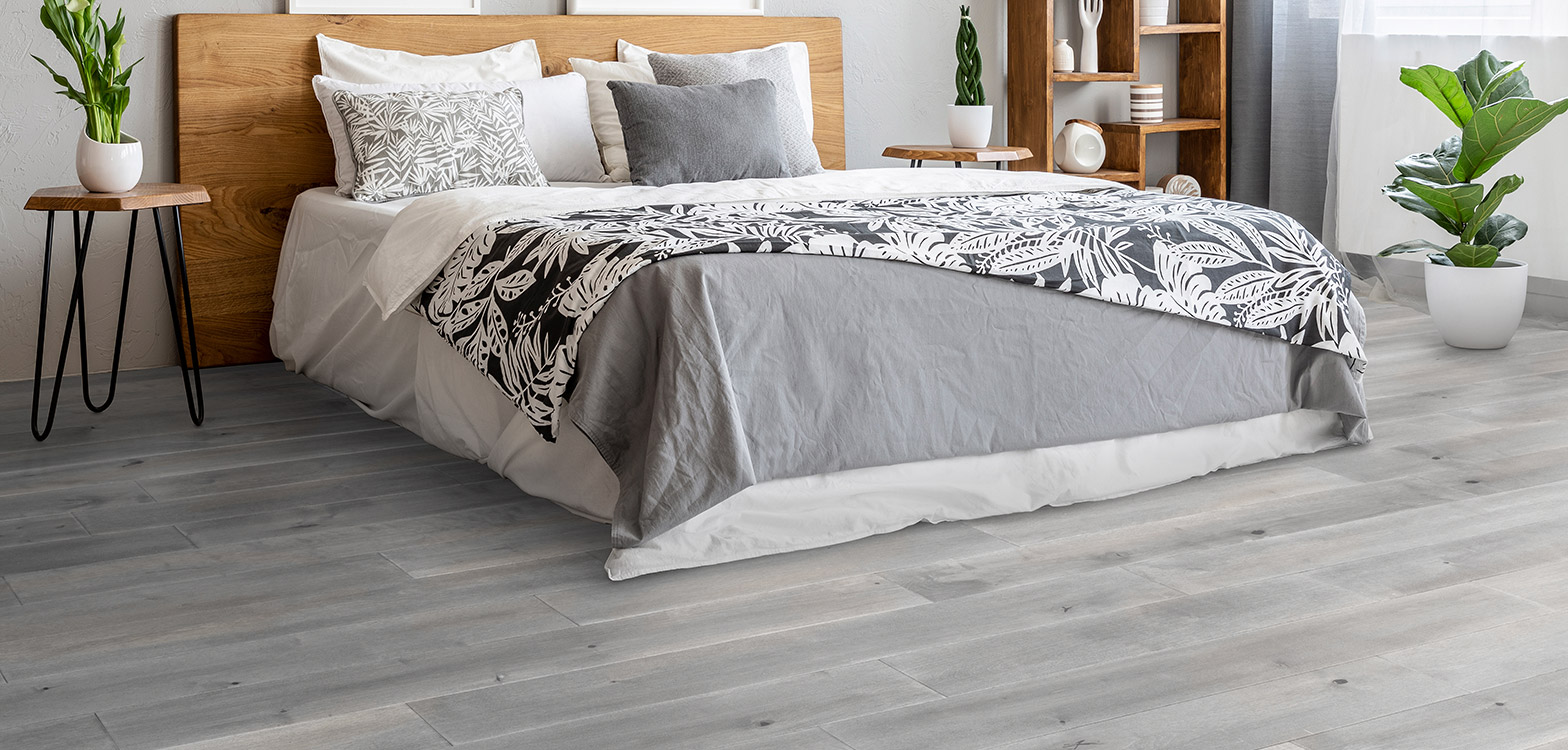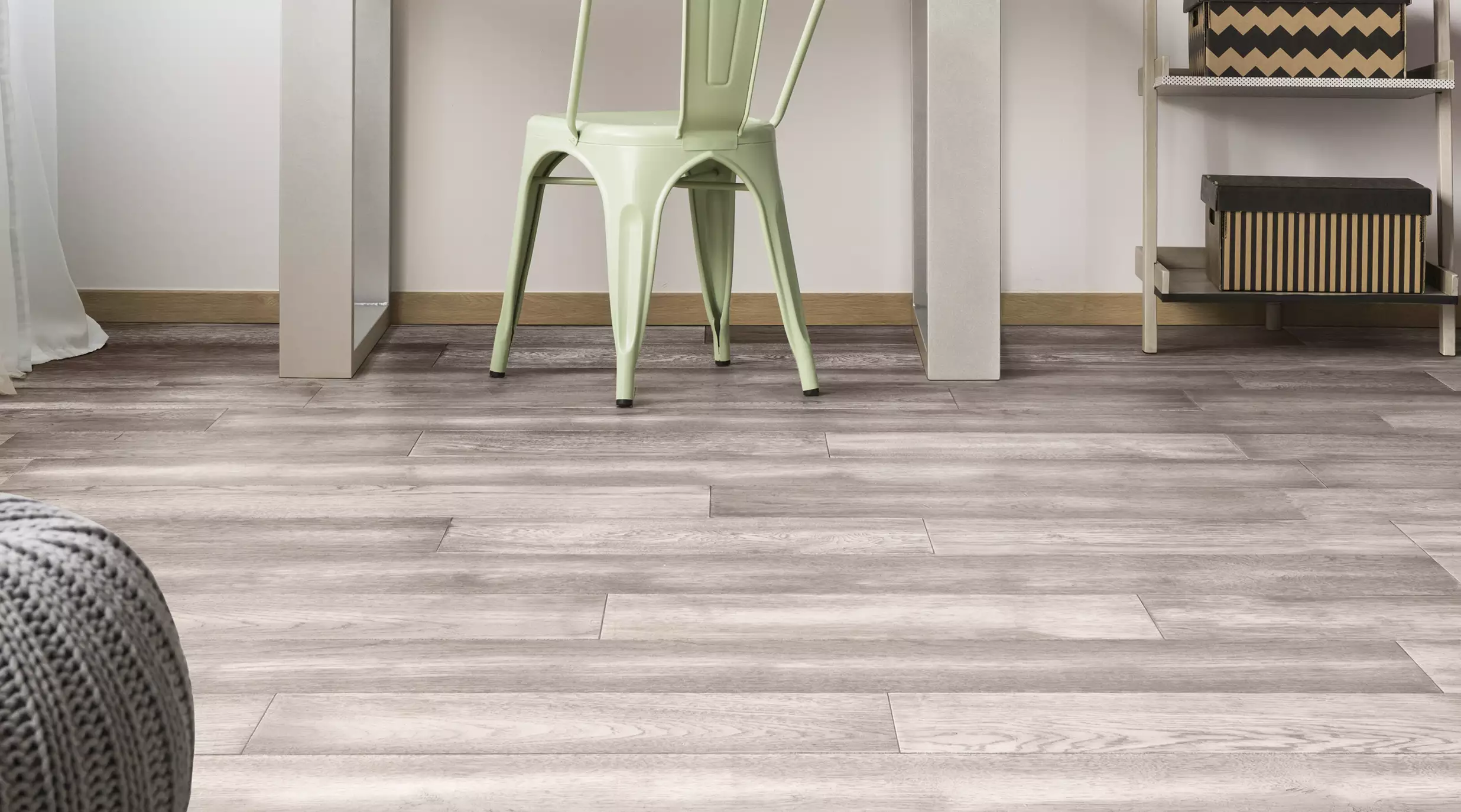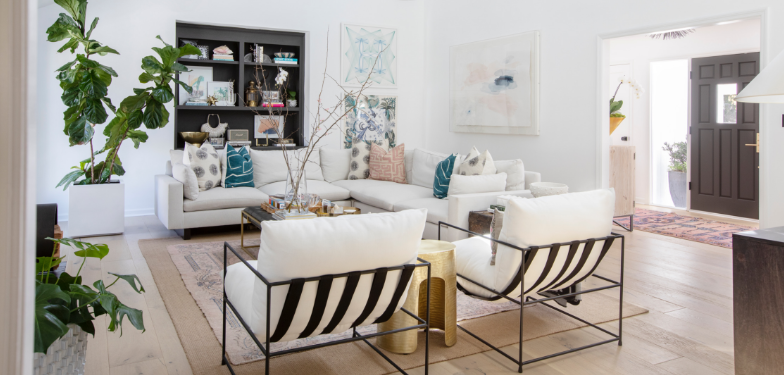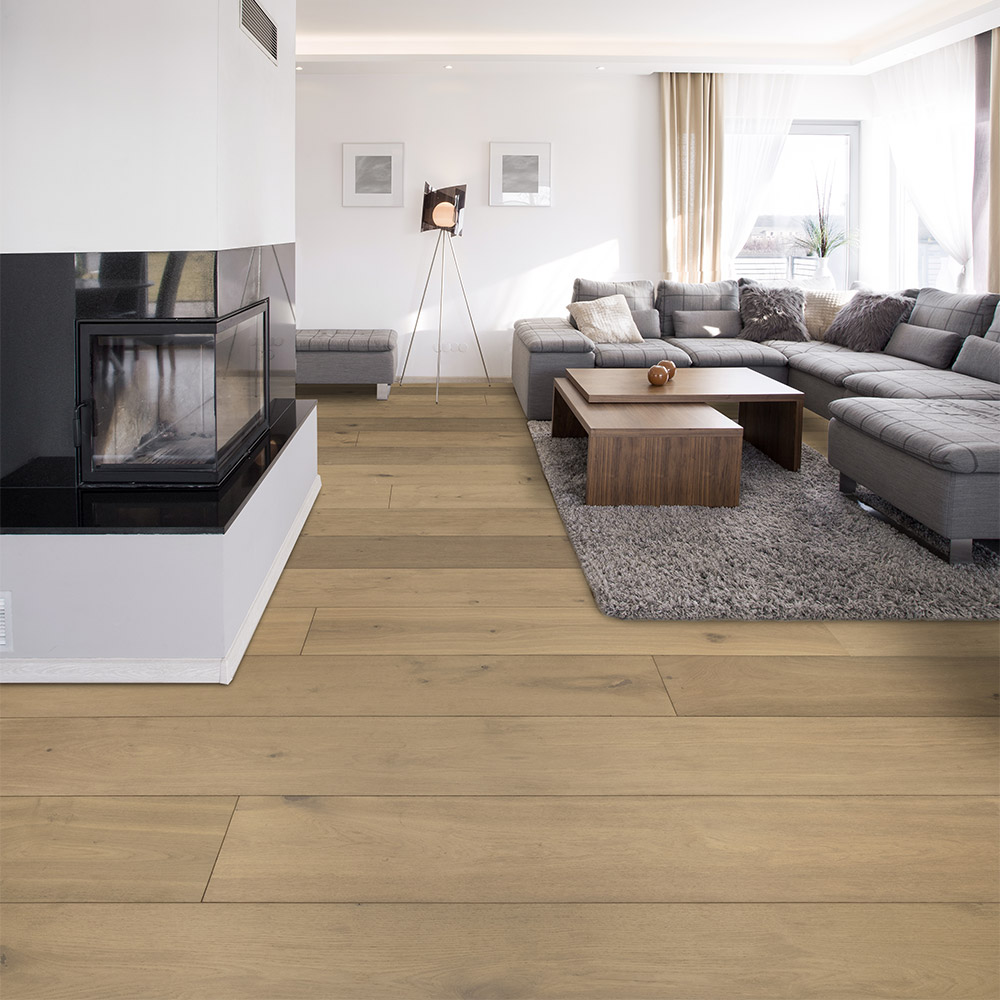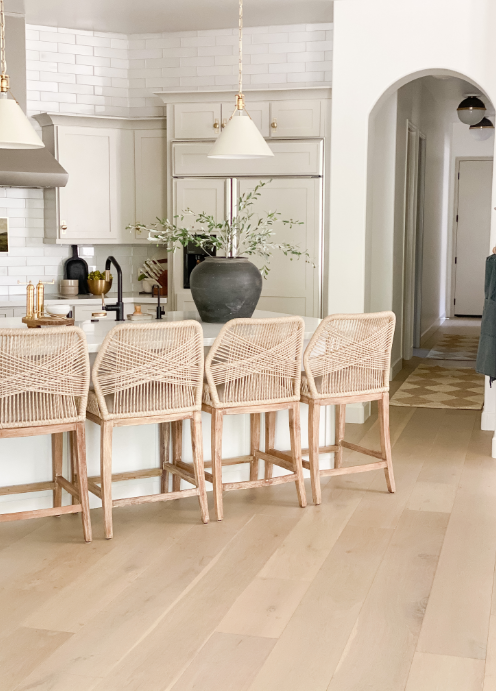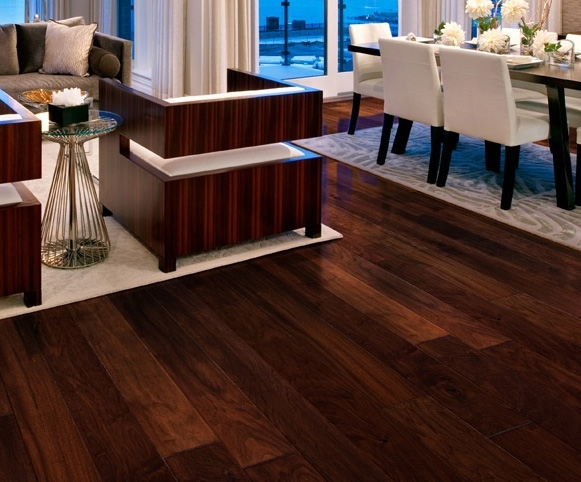For technicality sake, we must establish exactly what constitutes a “wide plank floor”. Floors have become wider and wider over the years as consumer tastes and preferences have gradually changed. With that said, there is no current set width that is required for a hardwood floor to be considered a “wide plank floor”. Some companies will say floors above 3 inches in width are considered “wide”, whereas another company may say a floor must be no smaller than 5-inches to be considered wide. The lowest width floor we offer at Urban Floor is 5-inches wide.

Wide Plank Flooring Pros
Install time – wide plank floors take up more room per square foot, so naturally it will take less time to fill a room with 7-inch boards as opposed to 3-inch boards. This allows for quicker installation periods, especially when handled by a professional.
Budget accommodating – wide plank floors vary greatly in price. Random width flooring is a popular option that falls within most people’s budgets. However, wide plank flooring can become expensive if you want boards that exceed roughly 10-inches.
The illusion of more space – wide planks create an illusion that the room you’re in feels larger than it really is. For some, this is a great way to liven up a room.
More characteristics – hardwood floors contain natural characteristics. Knots, natural splits, mineral streaks, and other characteristics can be seen easier with wide plank flooring as more of the board is exposed. This is something you cannot get with carpet!
Wide Plank Flooring Cons
Wide boards have a tendency to shrink and expand simply because they do not have as many seams as narrower boards. This can make it difficult for those who live in environments that fluctuate in temperature often. However, engineered wide plank floors help combat this issue. Engineered wood floors are built to withstand fluctuating temperatures.
Wide plank floors are not as DIY-friendly as you would like. Unless you absolutely know what you’re doing, leave wide plank floor installation to the pros.
As far as “is there such a thing as floors that are too wide?”, well… that’s simply a matter of preference. You can have hardwood floor planks as wide as you can imagine, but price may be your barrier. Also, the wider the floors, the more likely for issues relating to fluctuating internal temperatures.
We love wide floors at Urban Floor. Almost all of our collections feature wide planks ranging from 5 to 11.5-inches wide. Our Chene Collection is a wonderful example, as well as many floors featured in the Villa Caprisi Collection. Our widest floor comes from our Composer Collection, boasting wide plank floors as wide as 11.5-inches per board. Most of our collections fall in the standard 7-inch width, which is what many consumers find an exceptionally nice balance in – especially when made using engineered hardwood.

